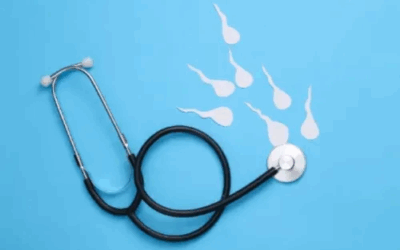Treatment Medications for Infertility

Clomid
Learn More
The growth of the follicles is monitored using transvaginal ultrasound. Follicular monitoring is done on day 10 through day 13 of the menstrual cycle. The addition of an ovulation trigger may be used with Clomid when the follicles reach an optimal size. Patients are usually recommended to do timed intercourse or intrauterine insemination (IUI) after Clomid.
Pregnancy rates with Clomid range from 6-10% in most studies. Adding in IUIs in some cases may increase those pregnancy rates to 12-15%. An estimated pregnancy rate of 18-20% has been reported for certain patient populations using IUI with donor sperm. Of the pregnancies that result using Clomid, 85% will occur in 3 months.
Various other medications can be used with Clomiphene citrate. Among these are metformin, estrogen, and gonadotropins (injections).

Femara (Letrozole)
Learn More
Letrozole is given in a dose increment of 2.5mg (2.5mg, 5 mg, 7.5mg) over 5 days. A midcycle follicular ultrasound assesses the follicle growth on days 10-13. The addition of an ovulation trigger may be used with Letrozole when the follicles reach an optimal size to ensure ovulation. Patients are usually encouraged to try timed intercourse or intrauterine inseminations. Other medications may also be used with Letrozole, such as metformin, estrogens, and gonadotropins (injections).
Pregnancy rates are similar to Clomid rates in timed intercourse cycles, IUI cycles, and donor sperm IUI cycles. However, Letrozole is being used more and more in our polycystic ovarian syndrome (PCOS) population to decrease the risk of ovarian hyperstimulation in a subset of patients.

Gonadotropins
Learn More
These injections must be used under the supervision of a doctor to prevent harmful side effects such as ovarian hyperstimulation (OHSS). The clinic provides detailed mixing and administration instructions.

Lupron
Lupron (leuprolide acetate) is an injectable medication administered daily just below the skin (subcutaneously or SQ) in the cycle before the controlled ovulation stimulation (COS) cycle and throughout the COS cycle. Lupron initially causes the release of LH from the pituitary gland in the brain. The LH is essentially emptied from the pituitary gland so that during the COS cycle, the higher levels of estrogen from the multiple growing follicles will not cause an LH surge and premature ovulation.
Learn More
Side effects while taking Lupron include hot flashes, vaginal dryness, and headaches. If these side effects occur, they will usually resolve after it is discontinued.

GnRH Antagonists
Like Lupron, these medications prevent the LH surge and premature ovulation. However, GnRH antagonists are taken for fewer days. They are administered daily when follicles reach a certain size or when estradiol reaches a certain level. Common antagonist medications are Cetrotide and Ganirelix.

Human Chorionic Gonadotropin
Learn More
Lupron can also be used as a trigger shot, especially during IVF cycles in which there is a higher chance of hyperstimulation. Lupron will cause a surge of LH from the brain if the patient has been on GnRH antagonists. The LH surge causes the final maturation of the eggs in the follicles and will result in ovulation or the “release” of the eggs approximately 38-40 hours later.
In intrauterine insemination (IUI) cycles, insemination is scheduled for around the time of ovulation. For in vitro fertilization (IVF) cycles, the egg retrieval procedure is scheduled 36 hours after the trigger shot so that the eggs can be retrieved before ovulation.

Progesterone
Progesterone produced from the corpus luteum stabilizes the uterine (endometrial) lining and keeps it healthy for an embryo to implant.
Learn More
In IVF cycles, some of the hormone-producing cells are removed from the inside of the follicles during the egg retrieval procedure. When the emptied follicles grow into corpora lutea, progesterone production may be compromised. Supplemental progesterone is used to support the lining of the uterus and prepare for implantation.
Progesterone can be administered as a vaginal insert, injection, or vaginal gel. Progesterone support is usually continued until 10-12 weeks of pregnancy in IVF cycles. Brand names include Endometrin and the vaginal gel Crinone.

Metformin – Glucophage
Learn More

Supplements
Learn More
Proper supplementation can significantly reduce the risk of neural tube defects. In addition to folic acid, women may consider prenatal vitamins that have DHA in them. DHA is a type of omega-3 fatty acid that also helps with the baby’s growth and development.
Lastly, in patients with age-related fertility decline, such as diminished ovarian reserve, some studies have shown a benefit in the number of eggs that may be stimulated and retrieved with Co-Enzyme Q 10 (Also known as CoQ10). CoQ10 is a substance in all cells that helps support mitochondrial activity and nutrients. The dosing of this has been controversial, but most fertility specialists will recommend a dose of 100-300 mg daily.
Recent Articles
Male Fertility Testing and Treatment: A Complete Guide for Charleston Couples
[dsm_blob_image blob_image="https://adorefertility.com/wp-content/uploads/2025/06/shutterstock_2199589367.png" alt="Male Fertility Testing" title_text="Male Fertility Testing" _builder_version="4.27.4" _module_preset="default"...
The Complete Guide to Fertility Treatment Options in Charleston & Mount Pleasant: Finding Your Path to Parenthood
[dsm_blob_image blob_image="https://adorefertility.com/wp-content/uploads/2025/05/shutterstock_2519117333.jpg" alt="Fertility Treatment Options in Charleston & Mount Pleasant" title_text="Happy,,Couple,And,Consultation,With,Doctor,In,Office,For,Fertility"...
Understanding Unexplained Infertility: Your Path Forward When Tests Come Back Normal
[dsm_text_notation before_text="Understanding Unexplained...



